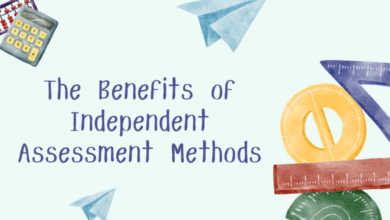
Music is a wonderful way for children to explore creativity, develop cognitive skills, and improve coordination. Among all musical instruments, percussion stands out as one of the best choices for young beginners. Unlike string or wind instruments that require precise finger placement or breath control, percussion instruments allow children to start making music instantly by simply striking or shaking them. For families looking for drum lessons in New York, percussion is an excellent starting point, offering an engaging and interactive way to introduce children to rhythm and musical expression.
Playing percussion helps children develop a strong sense of rhythm, which is essential for all types of music. It also improves hand-eye coordination, motor skills, and timing—abilities that extend beyond music and support overall cognitive development. Many studies suggest that learning rhythm-based instruments can enhance focus, memory, and even mathematical skills in young learners.
At MuseCool, we believe that every child deserves a fun and structured approach to learning music. Our expert instructors and innovative teaching methods make percussion lessons an exciting and rewarding experience for young musicians. This article is designed to help parents navigate the world of percussion instruments and choose the right one for their child. Whether your little one is drawn to the excitement of drums or the melodic tones of a xylophone, we’ll guide you through the best options and key factors to consider when starting their musical journey.
Why Percussion is a Great Choice for Kids
Percussion instruments are one of the easiest and most engaging ways for children to start their musical journey. Unlike instruments that require extensive finger coordination or breath control, percussion allows kids to produce sound naturally by hitting, shaking, or tapping. This simplicity makes it an ideal choice for young beginners, helping them build confidence and enjoy music from the very start.
Easy to Learn, Fun to Play
One of the biggest advantages of percussion instruments is their accessibility. Children can quickly grasp the basics without needing formal training in music theory. Even simple activities like clapping along to a beat or tapping a drum help kids develop a natural sense of rhythm. This immediate feedback makes learning fun and keeps young musicians motivated.
Developing Motor Skills and Coordination
Playing percussion instruments requires both fine and gross motor skills. Whether a child is shaking a tambourine, striking a drum, or playing a xylophone, they are actively engaging their hands, arms, and sometimes even their whole body. This movement strengthens hand-eye coordination and overall dexterity, which can benefit children in other areas such as handwriting, sports, and daily activities.
Boosting Focus and Memory Through Rhythm
Rhythm plays a crucial role in cognitive development. Learning and repeating rhythmic patterns trains the brain to recognize sequences, improving memory, concentration, and problem-solving skills. Research suggests that rhythmic training can enhance language development and even mathematical abilities, as both subjects involve pattern recognition and timing.
A Social and Collaborative Experience
Many percussion instruments are designed to be played in groups, making them perfect for social interaction. Whether in a school band, a drum circle, or a family jam session, percussion encourages teamwork, communication, and listening skills. Playing music with others teaches children to stay in sync, adjust their timing, and develop a strong sense of group dynamics—skills that are valuable both in music and in life.
With all these benefits, it’s no surprise that percussion remains a favorite choice for young musicians. The next step is selecting the right instrument to match your child’s interests and age, which we’ll explore in the following sections.
Types of Percussion Instruments for Kids
Percussion instruments come in many shapes and sizes, making them a versatile choice for young musicians. Some are simple and intuitive, perfect for toddlers, while others provide a stepping stone to more advanced drumming techniques. Below is a breakdown of percussion instruments suitable for different age groups.
Percussion Instruments for Young Children (Ages 3-5)
At this stage, children need instruments that are easy to play and fun to experiment with. These instruments help them develop rhythm awareness and basic coordination skills without requiring advanced techniques.
| Instrument | Description | Benefits |
| Tambourine | A frame drum with jingles, easy to shake or tap. | Develops coordination and rhythm. |
| Maracas | Small rattles that create sound when shaken. | Encourages hand movement and timing. |
| Castanets | Small percussion instruments that click together. | Improves fine motor skills. |
| Bongo Drums | A pair of small hand drums played with fingers and palms. | Introduces children to different rhythms. |
| Djembe | A goblet-shaped hand drum from West Africa. | Helps with hand-eye coordination and cultural music exposure. |
| Xylophone | Wooden bars arranged like a piano, played with mallets. | Introduces melody and basic note recognition. |
| Metallophone | Similar to a xylophone but with metal bars for a bright tone. | Develops an early understanding of pitch and sound. |
Percussion Instruments for Older Children (Ages 6-10)
As children grow, they can handle more structured instruments that require refined motor skills and more rhythmic precision. These instruments are great for kids who are ready for more musical complexity.
| Instrument | Description | Benefits |
| Snare Drum | A small drum with metal wires underneath for a crisp sound. | A fundamental drum in many styles of music. |
| Electronic Drum Kit | A digital version of a full drum set, played with headphones. | Perfect for practicing without making too much noise. |
| Conga Drums | Tall hand drums often used in Latin music. | Helps develop rhythm and hand coordination. |
| Darbuka | A small, goblet-shaped drum used in Middle Eastern music. | Encourages dynamic playing and rhythmic exploration. |
Choosing the right instrument depends on your child’s age, interests, and learning style. The next section will help parents decide which percussion instrument is the best fit for their child’s musical journey.
How to Choose the First Percussion Instrument?
Selecting the right percussion instrument for your child is an important step in fostering their love for music. The choice should be based on their age, level of interest, and practical considerations such as space and noise levels at home. Here are the key factors to consider:
Age and Interest Level
- For toddlers (ages 3-5), start with simple hand percussion instruments like tambourines, maracas, or xylophones. These are easy to play and help develop basic rhythm skills.
- For children ages 6-10, consider more structured instruments like snare drums, bongos, or even an electronic drum kit if they show a strong interest in drumming.
- Observe your child’s natural inclination—do they enjoy tapping on surfaces or moving to the beat? If so, percussion could be a great fit.
Ease of Learning and Playability
- Some percussion instruments require minimal effort to produce sound, making them ideal for beginners.
- Hand drums like the djembe or bongo are intuitive and allow kids to experiment with different tones using their hands.
- Xylophones and metallophones introduce the concept of melody while still being percussive.
- Avoid complex instruments that require advanced techniques too early, as they might frustrate a young learner.
Size and Comfort
- The instrument should be proportionate to the child’s size to ensure ease of play.
- Large drums or heavy percussion instruments may be challenging for smaller children to handle.
- Adjustable-height stands for snare drums or electronic drum kits can help accommodate growing children.
Space and Noise Considerations
- Percussion can be loud, so consider where your child will practice.
- If you live in an apartment, an electronic drum kit with headphones is a great alternative to an acoustic drum set.
- Soft mallets and practice pads can help reduce noise while still allowing kids to play.
- Some small percussion instruments, like hand drums and shakers, are naturally quieter and more suitable for shared living spaces.
By keeping these factors in mind, parents can choose an instrument that aligns with their child’s age, skill level, and living environment, setting them up for a fun and rewarding musical journey. In the next section, we’ll explore whether formal lessons are necessary and how to find the right teacher for your child.
Do Kids Need Lessons with a Percussion Teacher?
While percussion instruments are among the easiest for children to start playing, structured lessons with a teacher can greatly enhance their learning experience. Whether your child is tapping on a practice pad or exploring a full drum kit, guidance from an experienced instructor can help them develop proper techniques, stay motivated, and progress faster.
Benefits of Learning with a Professional Teacher
- Proper Technique – A teacher ensures that your child develops good playing habits from the beginning, preventing strain and improving coordination.
- Rhythm Development – Understanding timing and counting beats is crucial in percussion, and a teacher can provide exercises to strengthen these skills.
- Personalized Learning – Lessons are tailored to your child’s skill level, interests, and learning pace, making progress more enjoyable.
- Motivation and Structure – Regular lessons encourage discipline and provide a sense of accomplishment as your child reaches new milestones.
Combining Online and In-Person Lessons
Many parents wonder whether online lessons are as effective as traditional in-person instruction. The good news is that percussion is one of the easiest instruments to learn remotely, thanks to the following advantages:
- Convenience – Online lessons allow children to learn from the comfort of home, saving time on travel.
- Flexible Scheduling – Virtual lessons can fit into busy family routines more easily than in-person sessions.
- Interactive Tools – Some programs use AI-based feedback, video recordings, and rhythm apps to enhance practice between lessons.
However, in-person lessons provide the benefit of hands-on corrections and real-time interaction, making them ideal for younger children who need more direct guidance. A combination of both methods can be a great way to balance structure and flexibility.
How to Find the Right Teacher
Choosing the right instructor is key to keeping your child engaged and progressing in their musical journey. Here’s what to consider:
- Experience with Kids – Not all musicians are skilled at teaching children, so look for someone with experience in child-friendly instruction.
- Musical Background – A strong foundation in percussion, preferably with formal training, ensures quality teaching.
- Teaching Style – Find a teacher who matches your child’s learning style—some kids thrive with a structured approach, while others need a more playful and creative method.
- Lesson Format – Decide if you prefer private lessons at home, in a music school, or via online platforms.
A good percussion teacher can turn drumming into an exciting and rewarding experience, helping your child develop confidence and musical skills that last a lifetime. Next, we’ll explore how parents can support their child’s interest in percussion and keep them engaged in learning.
The First Step into the World of Rhythm
Introducing a child to percussion is an exciting journey that can spark a lifelong love for music. However, maintaining their enthusiasm and keeping them engaged in learning requires the right approach. Here are some ways parents can support their child’s musical development while making the experience fun and rewarding.
Encouraging Your Child’s Interest in Percussion
Children are naturally curious, and their initial excitement about an instrument can sometimes fade if they feel pressured or overwhelmed. To keep their enthusiasm alive:
- Expose them to different styles of music where percussion plays a key role. Watching performances or listening to drummers in various genres can inspire them.
- Celebrate small achievements. Whether it’s mastering a basic rhythm or playing along with a song, acknowledging their progress builds confidence.
- Let them experiment. Some kids may enjoy hand drums, while others prefer mallet instruments like the xylophone. Give them the freedom to explore different percussion sounds.
- Encourage creativity. Drumming doesn’t always have to follow strict rules—sometimes, simply playing along with a favorite tune or making up rhythms can be just as valuable as structured lessons.
Turning Learning into a Game
For young children, learning works best when it’s playful and interactive. Instead of repetitive drills, try making practice sessions more engaging:
- Use rhythm-based games, such as clapping patterns or call-and-response exercises.
- Play backing tracks or metronome beats to turn practice into a fun challenge.
- Create a simple reward system where consistent practice leads to a small treat or special privilege.
- Incorporate movement—dancing to the beat or marching while drumming can make practice feel like play.
Exploring Additional Learning Resources
There are many ways to supplement lessons and encourage independent learning. Online tutorials, interactive apps, and beginner-friendly rhythm exercises can provide extra support. Parents can also look for group workshops or drumming circles where children can play with others, reinforcing social and musical skills.
For those looking for structured guidance, there are dedicated platforms that offer personalized lessons with experienced tutors, helping children develop strong foundational skills while keeping their love for percussion alive. The key is to create an environment where music feels like an adventure, not a chore—one where rhythm becomes a natural part of their world.
With the right balance of encouragement, fun, and learning, children can develop a deep connection to music, setting the stage for a lifelong appreciation of rhythm and percussion.
Conclusion
Choosing the right percussion instrument for your child is an exciting step toward fostering a love for music. Whether starting with simple hand percussion like tambourines and maracas or moving toward more structured instruments like snare drums and xylophones, the key is to match the instrument to the child’s age, interests, and comfort level. Encouraging exploration, keeping lessons fun, and providing the right support can make all the difference in maintaining their enthusiasm.
Above all, music should be an enjoyable and enriching experience. Children progress best when they are inspired, engaged, and free to experiment with rhythm in a way that feels natural to them. With the right guidance, they can develop essential skills such as coordination, discipline, and creativity. Platforms like MuseCool offer a structured and engaging approach to percussion education, combining expert instruction with innovative learning tools to help young musicians grow. If you’re looking for drum lessons in NY, finding the right teacher and learning environment can set your child on the path to musical success. Whether your child is taking their first steps into the world of rhythm or looking to build on existing skills, the right support can make all the difference in their musical journey.
Visit www.wordplop.com now to discover tools that make writing easier and more fun!








